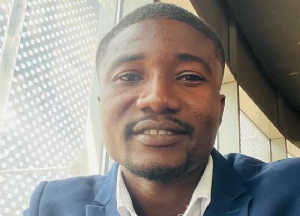“At a quick glance, one could assume that the term ‘highlife’ reflects a single, coherent musical style (i.e., ‘highlife music’) that gained great currency throughout West Africa in the 1950s and 1960s and, more recently, in the ever-expanding world music branch of the commercial industry…
“In actuality, highlife is a much more slippery term. Since the term’s first recorded usage in 1920, Ghanaians have used it to refer to an ever-changing array of musical products replete with diverse instruments, melodic elements, and stylistic innovations.
“Today, the word ‘highlife’ denotes a considerable range of interrelated yet distinct musical styles, including dance band highlife, guitar band highlife, brass band highlife, burgher highlife, reggae highlife, calypso highlife, gospel highlife, and hiplife, a recent incarnation that draws heavily from hip hop’s influences and elements.
“Over the last fifty years, studies have characterized highlife as a ‘creative response to the modern world’; a neo-folk music and source of tradition; an urban phenomenon; a ‘music hybrid resulting from the acculturative impact of…the colonial period’; and a quintessential form of African popular culture. Highlife, in other words, has been a lot of things to a lot of people” (Nathan Plageman).
An important caveat
In spite of external influences on its formation and evolution, highlife still remains quintessentially Ghanaian and African.
The fact that African and Asian cultures and music traditions influenced Western music forms including classical music, does not in and of itself take away the fact that Western music forms are quintessentially Western. Such are hard facts of sociology and history.
Some thoughtful observations
Today dance bands and flow shows are hardly the norms in the Ghanaian music industry, a contrarian view quite unlike the days of the older generation.
Today, people attend live shows where singers and musicians do most of the dancing and singing from a detached space, that is, without what should have otherwise been a touch of direct emotional attachment between entertainers and audiences, something the older generation took for granted.
Perhaps, that emotional detachment somehow manages to de-link audience members from the fullest reach, or extent, of the accessible souls of songs performed at live performances.
Thus live performances have become de-personalized for the most part.
Our contemporary musicians and singers have become human orchestrions. Music automation is the order of the day.
THE VULGAR INFLUENCES OF DANCEHALL AND HIPLIFE ON CONTEMPORARY GHANAIAN MUSICAL CULTURE
One possible reason is that our “music” is losing its “originality” by the day, a controversial viewpoint second-generation roots reggae, Luciano, seemed to support especially in the case of Ghanaian dancehall, during an interview in Ghana:
“Dancehall music was there long ago and I will not be the one to stop it, but make sure you don't mislead people. Reggae turn but dancehall burn up! Don't lose your way. Don't lose your way I say…”
Elsewhere he also made the following statement:
“Dancehall has brought violence into the hearts of the youth…”
Luciano mentioned the case of Vybz Kartel to buttress his critique of Ghanaian dancehall and the violence dancehall artistes promote in their music.
As a matter of fact, incorporating elements of G-funk lyrical decadence into Ghanaian dancehall is nothing new.
But not every aspect of dancehall is necessarily objectionable. There has always been what has been called “conscious dancehall.”
This was and still is the subgenre of reggae that Buju Banton, now in an American prison on a purported drug-related trumped-up charge (s), and others like Anthony B, Capleton, and Sizzla, a great musical talent with at least 70 albums to his credit and a characteristic gruffy, gravelly voice, also noted for his versatile singjay-style vocalism, have been championing for the past two decades or so.
Even the lyrically influential Buju Banton, another musical genius also noted for his distinctive gruffy or gravelly voice on such tracks as “Destiny” and “Champion,” originally identified with the “lyrical slackness” of the early dancehall movement until his conversion to Rastafarianism pulled him out of that unspiritual, morally stinking dross of “lyrical slackness” into the conscious dancehall movement, where he underwent conscientization.
What is more, his role in returning dancehall to roots reggae has been recognizably huge. Then again it is reportedly Buju Banton, not Bob Marley, who holds the Jamaican record for the maximum number of number one singles released within a single year! Furthermore, on the track “Till I’m Laid To Rest,” for instance, Buju Banton reminisces about the places he will like to see till he leaves this life. Ghana is one of such countries:
“In Addis Ababa then Batswana…
“Left Kenya end up in Ghana…
“Oh, what a beauty my eyesight behold…
On a larger plane the core lyrical message of Buju Banton’s “Till I’m Laid To Rest” coincides somewhat with Ziggy Marley and the Melody Makers’ “Black Story.” This beautiful also mentions Ghana:
“Black my story, black my story…
“Not his-story, black my story…
“From education to civilization…
“From astrology straight to biology…
“African glory, African glory…
“What we got to see, must be African liberty…
“Oh the land of good Ghana…
The point of this all is that even if the Ghanaian dancehall movement wants to copy Jamaican dancehall, they should look to the Jamaican conscious dancehall movement. And conscious music of any genre does not necessarily mean lyrical references to romantic topics, say, are totally out of bounds.
It is the way such a topic is lyrically and conceptually framed that is of major concern to us. We are looking at music and lyrical formations from the standpoint of deontology. Here is a typical example from Bob Marley’s “Sir It Up”:
“Come on and stir it up….little darling!...
“Stir it up; come on, baby!...
“I'll push the wood, then I blaze ya fire…
“Then I'll satisfy your heart's desire…
“All you got to do, baby, is keep it in…
“Quench me when I'm thirsty…
“Your recipe is, darling, is so tasty…
“When you show and stir your pot…
What was Bob Marley actually trying to say?:
Could the word “recipe” stand for real food or for a woman’s body and the way she goes about romance? Could the word “wood” stand for a wooden spatula or penis? Could the phrase “keep it in” mean keeping a wooden spatula in a cooking bowl or vagina? Could “quench me when I’m thirsty” mean sexual satisfaction (or orgasm) or quenching his thirst or physical hunger?
Could the sentence “I’ll push the wood” mean penile penetration of what Inner Circle’s sings about on “Sweat (A La La La La Long)”? Could “stir it up” mean foreplay or an appetizer? Does the word “tasty” refer to a mouth-watering dish or rather to how good a woman’s vagina is?
We do not know! What we do know for a fact is that the lyrics for “Stir it Up” could be loosely translated to mean either of the scenarios, even both. In other words, romance could be the subject matter of a song without the lyrics being sexually explicit. This was what A.B. Crentsil did with his classic “Moses.” On the other hand, no listener of Shatta Wale’s “Wo Maame Twe” need go further than the song’s titular suggestiveness to know what the subject matter may be about. And there are children who listen to his songs and also look up to him as a role model.
Anyway, here is how Stonebwoy essentially viewed Luciano’s commentary:
“Luciano is a well-respected artiste and for him to say that [dancehall] is breeding violence, it calls for concern.”
In an interview in Ghana, the late Joseph Hill of roots reggae band Culture referred to dancehall as “the waste product of reggae.”
In other words Ghanaian dancehall artistes are mere copycats, an observation Luciano’s fellow Jamaican Gramps Morgan, a solo artiste and a member of reggae band Morgan Heritage, disagrees.
Yet much of what is churned out in the hiplife generation is a symbolic dumpsite for unconscious lyricism, of social and political inarticulacy.
In other words much of the landscape of the hiplife generation is not conscious of the lyrical power of social and political articulation in changing minds and transforming the larger society for the better.
This is not merely a generational thing per se. Market forces do play a major role in shaping this determination or managing this transformational direction of musical trends that cater mostly to an intellectual normative based on a troubling concept of philosophical and cultural superficiality.
THE WAY FORWARD
Granted all that, what can anyone expect from these philosophically lifeless copycats with their fake patois and cackling cacophonies and cultural de-centeredness and spiritual emptiness?
The apparent lack of Afrocentric consciousness in the lyrical and aesthetic superstructure of the hiplife generation has everything to do with the declining consciousness of social philosophy, critical theory, and critical philosophy in the arts, particularly, insofar as dealing with hard questions about the human condition is concerned.
Again, it is deeply regrettable that much of the lyrical repertoire of the hiplife generation lacks philosophical and cultural depth. How do we revisit late Frimpong Thomas’s classic “Aye Yi”?
Or the guitar-driven (and sparingly horn-driven) “Highlife Safari” album of Eric Agyeman featuring the great classics “Abenaa Na Aden,” “Ao! Matutu Mirika,” “Masem Yi,” and “I Don’t Care”?
In many a situation therefore, words are merely put together in a profound string theory of lyrical aesthetics by hiplife rappers, because they rhyme almost perfectly and beautifully and not because they necessarily harbor that narrative or conversational power of internal cohesion as far as the hortatory teachability of Afrocentric consciousness and social philosophy go.
Of course, the practice is to follow the normative aesthetics of spoken-word architectonics but without a solid foundation rooted in the blood and soul of Afrocentric social and political philosophy.
Also, the fact that we mention Afrocentric consciousness should not be construed to mean a negation of the universal mind as far as the pursuit of humanism and solidarity is concerned.
And many of us tend to ignore the fact that every piece of music is a creative form of a dialogue or another in that the singer, musician, or songwriter directly or spatially conversationally engages a listener (s) and courts the listener’s opinion, approval or disapproval, satisfaction or otherwise, or criticism through the latter’s [the listener (s)] responsive conformity to the welcoming prompture of [the listener’s] terpsichorean impulses, deep reflection, or outright rejection of the song, its lyrical message, harmony, melody and rhythm.
Even some self-styled music critics/music journalists in our part of the world tend to gloss over this pedestrian observation when assessing the overall impact of music on society as well as on individual consciousness.
These self-styled music critics/music journalists tend to empanel themselves as the sole judges of what actually constitutes the aesthetics of music. Yet we are also willing to make room for the maxim that “beauty is in the eye of the beholder,” for music criticism is as subjective anyone can imagine.
Regardless of the preceding reservations, the fact also remains that the desire to make quick money and to achieve temporary fame is all part of the steady decline in musicianship.
For the most part therefore, music no longer seems to originate from the depths of the human soul as it used to be less than a generation ago.
Still, none of Samuel Owusu’s songs promotes any social vices that we know of. Neither does any of his songs in his 13-album repertoire promote violence.
His laidback balmy vocal fry register, almost childlike though socially and morally vociferous is totally devoid of any sheepish conformity to social and cultural aberrations insofar as the character of the human person is concerned.
That is, he may not have the thundering bass-baritone of Barry White, the booming baritone of Isaac Hayes, or the tenor of Luciano Pavarotti, say, yet his singing voice carries the thundering bass-baritone of moral authority.
Perhaps the only major downside to his musical career as a whole is his subpar live performances, which may partly be due to the caliber of band he plays with. As well, it may be that band members are not professional session musicians in the first place.
If this were indeed the case, then it is one area he would have to seriously work on if he so much as wants to maintain the rich continuum between the heavy aesthetical mechanization of his signature highlife and contemporary genres.
In our opinion, the musical greatness of Samuel Owusu represents the intermediate space between the older generation of creative traditional highlife and palm-wine music and the dying highlife genre, or neo-traditional highlife, of the Ofori Amponsahs, of the Bisa Kdeis, of the K.K. Fosus, of the Kwabena Kwabenas, of the late Daasebra Gyamenas. We make no apologies for this controversial position.
In the end Samuel Owusu’s, that is, his musical signature is a creative hybrid of the universal mind and Afrocentric consciousness but with a preponderant emphasis on Afrocentric social philosophy.
Similarly, we can advance this argument in the special cases of the rich repertoires:
Of Koo Nimo, Nana Kwame Amapdu, Asabea Cropper, Joe Mensah, Obouba J.A. Adofo, E.K. Nyame, Ebo Taylor, Ewurama Badu, C.K. Mann, King Bruce, Kakaiku, Pat Thomas, Akwasi Ampofo Adjei, Nii Adu Ofoliquaye, Osibisa, the Ramblers…
Of King Ayisoba, Wulomei, E.T. Mensah (“the King of Highlife”), Smart Nkansah, Papa Yankson, Dr. Paa Bobo, J.K. Nketia, Kofi Sammy, Dr. K. Gyasi, Jerry Hansen, Nana Akwaboah, Adomako Nyamekye, the Stargazers, Kwaw Mensah (a nephew of “Ghana’s” first highlife guitarist Jacob Sam)…
Of Atongo Zimba, Kwabena Onyina, Eric Agyeman, Amakye Dede, Alex Konadu, Agyaaku, Ephraim Amu, P.K. Yamoah, F. Kenya, Bob Cole, Alhaji K. Frimpong, Nana Tuffour, A.B. Crentsil, Senior Eddie Donkor, Jewel Ackah, Marriot International Band…
FOOD FOR THOUGHT
We cannot overemphasize how the moral corruption of our contemporary civilization has come to define the soul and spirit of the hiplife generation.
More so, because you have these employed youths and truants who swamp around a mediocre singer like Shatta Wale as though he is some sort of “god MC,” to borrow M.anifest’s titular diss song against Sarkodie, and as though he is also kind of a music icon, a musical honey bee.
These acultural youths and their copycat celebrities and idols appear out of tune with the traditional highlife generation and its accompanying high sense of cultural, moral and social consciousness.
Except for a few within the hiplife movement who make good, or conscious, music generally, it still comes across as if this generation has lost any true sense of deontological direction insofar as moralizing their musical repertoires is concerned. But we cannot exclusively blame the youth!
Look at the ruling class! As a matter of fact, the ruling class’s crass behavior makes arrant nonsense of burgher-highlife artiste, Ben Brako’s sensational nationalistic or political anthem “Anokum”!
CONCLUSION
We should make it clear that Ghanaians like Rocky Dawuni, Felix Bell, Kwame Bediako, Blakk Rasta, Doobia Sheriff Ghale, and Black Prophet who are associated with the roots reggae genre make a lot of sense with their conscious music and positive message than our latter-day wannabe dancehall artistes, notwithstanding the fact that reggae as an international platform has greatly influenced Ghanaian music in many important ways just like Congolese music did, the latter of which, together with economic hardships in Ghana, caused the popularity and patronage of highlife to decline on the international scene.
This economic hardship and many years before it, to wit, the overthrow of Nkrumah and his progressive government, led to many of these innovative musicians and singers leaving the shores of Ghana for abroad to ply their trade where they had hoped to explore ways and means of improving the genre and expanding their fan base, among others.
The momentous birth of burgher-highlife owes everything to foreign-based technology and music producers, to the legacy of traditional highlife and palm-wine music, as well as to the creativity and hard work of a section of the Ghanaian Diaspora, particularly those based in Germany, and came about as a result of some of these afore-mentioned sociological, economic, political and historical facts.
Lest we forget readers may want to consult Eric Charry’s book, “Hip Hop Africa: New African Music in a Globalizing World,” which treats in some detail the history of reggae in Ghana and how it contributed to the transformation of Ghanaian music on the whole. It is a must-read.
REMINDER
We shall return with Part 4.
REFERENCES
Nathan Plageman. “Highlife Saturday Night: Music And Social Change In Urban Ghana.” Indiana University Press. December 19, 2013.
The Jamaican Observer. Ghanaian Act Lashes At Luciano. April 22, 2015. Retrieved from http://www.jamaicaobserver.com/entertainment/Ghanaian-act--lashes-at-Luciano-_18795408
Ghanaweb. “Dancehall Breeding Violence Amongst The youth—Luciano.” April 22, 2015.
“Biography: Sizzla.” Retrieved from https://www.reggaeville.com/nc/artist-details/artist/sizzla/ac/biography.html
Opinions of Sunday, 4 September 2016
Columnist: Kwarteng, Francis















